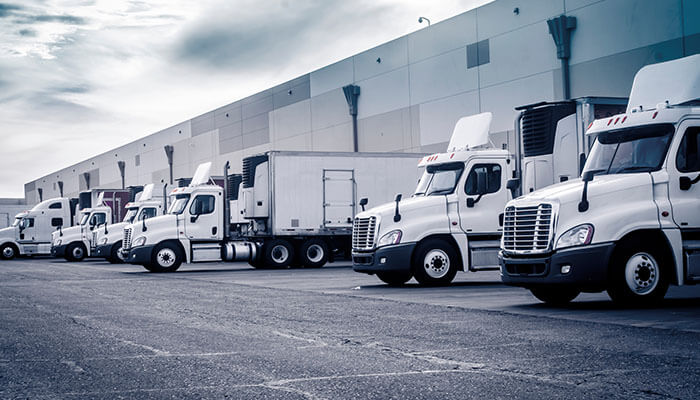Trucking companies have high demand levels simply because they’re considered industry movers. Because of this, it’s unsurprising to learn how trucking business have significantly increased their contribution to the nation’s gross domestic product (GDP) over the years. Statista recently reported an increase of 13.5%, amounting to USD$192.52, compared to the previous year.
Given these numbers, starting a trucking business takes quite a significant capitalization requirement, but it also promises a high and fast return on investment. However, those desired investment returns can’t be achieved without promising revenue. Maintaining a revenue level is sufficient to be a few steps ahead of the competition and keep your trucking business stable, regardless of the economic storms it has to weather through.
With the competition becoming increasingly stiff, one must know that it takes more than just becoming a great trucker to maintain and grow your trucking business’ revenue. Don’t let the lack of cash inflow and low carrier rates prevent you from achieving business stability with these easy ways to increase your business’s profit margin. That said, consider the best ways to improve your trucking business revenue as discussed below:
Save Money On Fuel
One of the highest costs when running a trucking business is fuel expense. After all, trucking businesses can only survive with an ample fuel supply. Because the fuel price is quite erratic, getting the best mileage or price per order for each truck is vital. You can even haggle for good deals with a good supplier, so your trucking business’s fuel expense doesn’t skyrocket.
Once you’ve figured out the price and supplier, there are also things you can implement as fuel-efficient practices in your trucking business. A few of those include:
1. Buy fuel in bulk:
This first tip is why finding a good supplier is essential. Remember, you’re not buying just for a residential car. For multiple trucks, you’re buying in bulk, possibly consuming the whole tank of gas every few days or so.
It’s best to take advantage of bulk orders so you can have good deals. The better the deal, the better for your business’ finances.
2. Plan the best routes for each trip:
Installing a Global Positioning System (GPS) in all your trucks is ideal to help check if truck drivers take the most efficient way. Not only are deliveries made on time, but the fuel expense can also be reduced as drivers take the shortest trips possible.
3. Check each driver’s driving habits:
Excessive idling, overspeeding, harsh braking, and hard accelerations are all fuel-eating habits. Because of this, it’s best to do an audit occasionally to encourage better driving habits that are healthy for your business’ finances. This applies to all your drivers regardless of how long they’ve worked for your business. Moreover, it can also potentially increase your fleet’s lifespan when your trucks aren’t overused.
There are more practices your trucking business can do to reduce fuel expenses, so it’s up to you to discuss those thoroughly with your team and start applying those changes, one switch in the habit at a time.
Stay On Top Of Preventative Maintenance
Trucks must undergo preventive maintenance checks at least once every six months. This allows you to stay on top of any issues your truck may have. It’s better to spend on those preventative checks than deal with costly repairs later on.
Most importantly, following through with the manufacturer’s maintenance checks keeps your trucks in the best condition possible, significantly lowering any expense associated with the premature purchasing of new vehicles just cause the ones on your fleet are damaged beyond repair.
Any idle time in your fleet caused by truck repairs can hinder productivity and loss of income. In the long run, revenue potential increases with good-functioning trucks.
Calculate Your Cost Per Mile
As a trucking business, it’s essential to factor in every cost that goes into each truck trip, so you can ensure that profits for each journey are positive. Calculating your estimated cost per mile allows you to determine the per-mile rate you will charge your clients.
Currently, many trucking businesses rely on spreadsheets or manual calculations to determine their cost per mile, leading to inaccurate pricing and revenue loss. Tools like ToroTMS that integrate with QuickBooks can help to automate cost tracking, streamline invoicing, and ensure accurate financial reporting.
To do so, you can add the fixed and variable costs divided by the mile driven. The fixed costs refer to your truck’s monthly expenses charged whether they’re hauling or not. This includes insurance, salary, payment leases, and the like. On the other hand, variable costs are monthly costs incurred when the truck operates. This includes fuel, tolls, and permits, among other fees.
Knowing this allows your trucking business to find high-paying truckloads occasionally, which helps increase revenue. For instance, you can take on more challenging shipments to transport or require more time and skill. By the nature of those shipments, it makes sense to demand higher rates.
The Bottomline
Operating this highly-competitive industry means a bulk of the effort to increase trucking revenue. Moreover, it rests significantly on effective marketing strategies. Consider the tips shared above, and take it one strategy at a time to double-check and see what is effective and valuable for your trucking business’s specific revenue-growth concerns.



